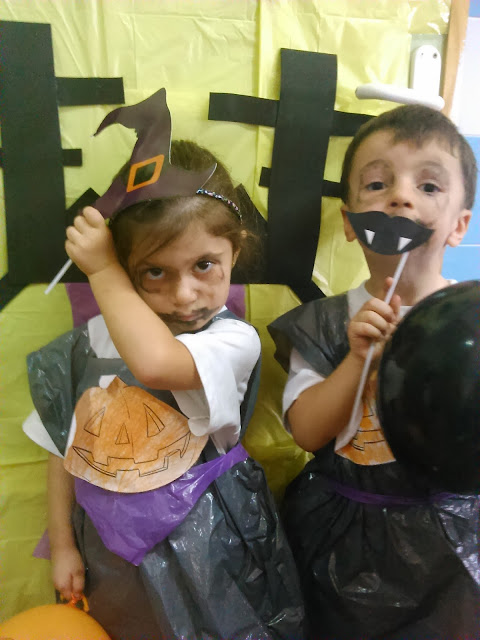IT’S HALLOWEEN DAY…

It’s
one of America’s favourite holidays, but what’s the real story
behind the tricks and treats of Halloween? !CIt’s thought to have
originated with an ancient Celtic festival, when people would like
bonfires and wear costumes to ward off roaming ghosts.
In the eight century, Pope Gregory III designated November 1st as
a time to honor all Saints and martyrs.The evening before was known
as All Hallow’s Eve and later Halloween.Over time, Halloween
becomed into a secular festivity characterized by child friendly
activities such as trick or treating. In a number of countries around
the world as the days grow shorter and the nights get colder, people
continue to usher in the winter season with gatherings, costumes and
sweets treats.
The American Halloween tradition of “trick or treating” dates back to the early All Souls Day parades in England.
During the festivities, poor citizens would beg for food and families would give pastries in return for their promise to pray for the family’s dead relatives. The distribution of pastries was encouraged by the church as a way to replace the ancient practice of leaving food and wine for roaming spirits. The tradition of dressing in costume for Halloween has both European and Celtic roots.
In different sessions we have been celebrating Halloween, decorating our classroom doors, the corridors, with monsters, pumpkins, black cats, spiders, vampires…
Our little children in Infantile education learn to communicate using the language in an oral and visual way, watching a video, listening to a song, answering teacher questions, dramatizing short chants, such as “can you give me candies please”,also spending a joke to someone “trick or treat”. They take part in dynamic games and in the “photo call” developed firstly in the classroom and then in the assembly room proposed by the whole commission team. They feel happy at the school becoming the heroes of their own learning. We can see some students developing different activities:
ES EL DÍA DE HALLOWEEN...
Es una de las vacaciones favoritas de América, ¿cuál es la historia real que va más allá de los trucos y los tratos de Halloween?Se piensa que se originó con un antiguo festival Celta cuando las personas encendían hogueras y llevaban trajes para alejar a los espíritus errantes.
En el siglo VIII, el Papa Gregorio III designó el 1 de Noviembre como un tiempo para venerar a todos los santos y mártires.La noche anterior fue conocida como la noche Santa y después conocida como “la víspera del día de Todos los Santos”.Con el tiempo, Halloween se convirtió en una fiesta secular caracterizada con actividades aptas para menores tales como truco o trato.
En un gran número de países alrededor del mundo, cuando los días son más cortos y las noches más frías,las personas continúan con reuniones, disfraces y tratos de caramelos.
La tradición americana de Halloween, víspera del día de todos los Santos, la sitúa en los primeros desfiles del día en Inglaterra.Durante las fiestas, los habitantes pobres pedían comida y la familia les daría pastelillos por su promesa para rezar por los parientes muertos de la familia.La distribución de los pastelillos fue alentada por la iglesia como una forma para remplazar la práctica antigua de dejar la comida y el vino para los espíritus errantes.
La tradición de disfrazarse para Halloween tiene ambas raíces Europeas y Celtas.
Hemos estado trabajando Halloween en diferentes sesiones, decorando nuestra puerta de aula, los pasillos con monstruos,calabazas, gatos negros, arañas, vampiros…
Nuestros niños en educación infantil aprenden a comunicarse usando la lengua en una forma oral y visual, mirando un video, escuchando una canción, respondiendo a preguntas del profesor, dramatizando cortas retahílas, tales como "¿puedes darme caramelos por favor?", incluso gastando una broma a alguien:"truco o trato".Ellos toman parte en juegos dinámicos y en el “photo call” desarrollado primero en la clase y luego en el salón de actos, propuesto por el equipo de comisión. Ellos se sienten feliz en el cole convirtiéndose en los héroes de su propio aprendizaje. Podemos ver algunos alumnos desarrollando diferentes actividades:















No hay comentarios:
Publicar un comentario